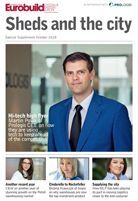I remember as a child seeing footage of the inner workings of a Japanese car plant, where robotic arms welded and riveted together each component of a Mazda or Datsun as they came down the conveyer – and with not a single human in sight at any stage of the process. It was a fascinating and yet terrifying vision of the future: precision, efficiency and one where homo sapiens are literally redundant. Our days as useful employees, it seemed, were numbered. And yet, this dystopian vision did not come to pass. For one thing, the footage was very selective, omitting to show the operators required for these robots. Human employment didn’t go out of the window and was actually boosted as hi-tech production thrived across the manufacturing sector. In fact, the worst consequences of it were all those boring people who insisted on doing robot-dances at discos.
Fast-forward several decades and it seems we’re on the brink of another technological revolution, this time populated b































































